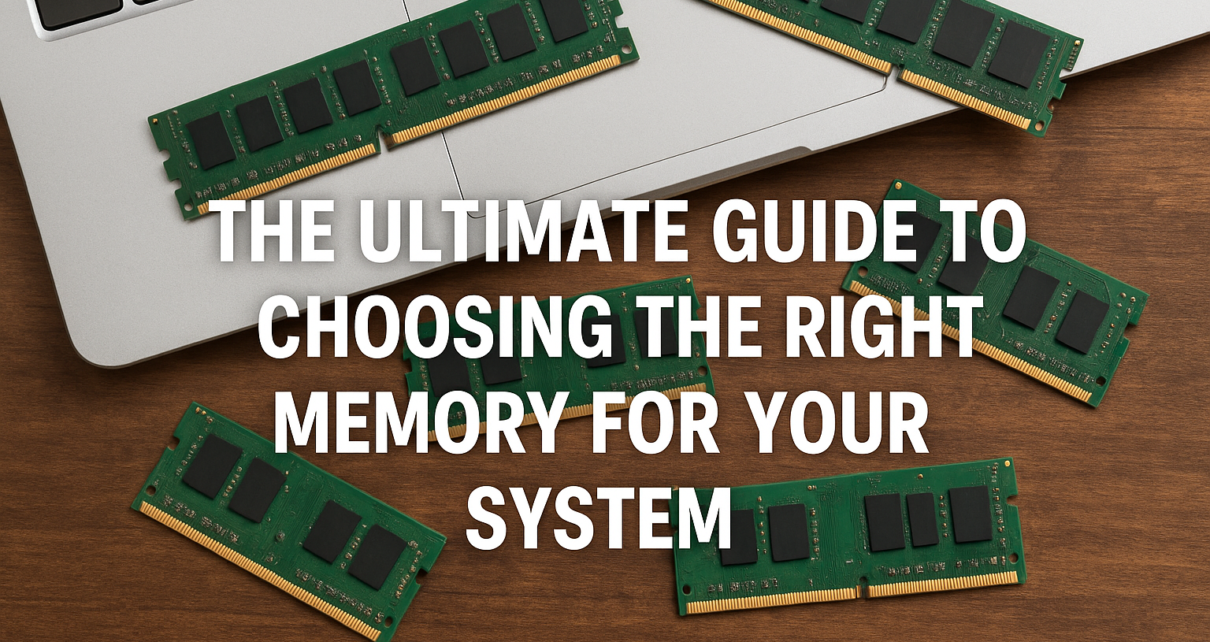Choosing the right memory is one of the most critical decisions when building or upgrading any computing system. Whether you’re optimizing a server for uptime and scalability or customizing a desktop for high-performance gaming or content creation, understanding the nuances between server memory and desktop memory is key to maximizing reliability, speed, and productivity.
What Is Memory and Why It Matters
Memory, or RAM (Random Access Memory), acts as the short-term workspace for your computer. It temporarily holds the data and instructions your system is actively using, making it crucial for running applications efficiently. The right choice of memory impacts everything from boot time to multitasking, gaming frame rates, server uptime, and beyond.
Understanding Desktop Memory: Fast, Versatile, and User-Friendly
What Is Desktop Memory?
Desktop memory refers to the standard RAM modules used in personal computers. It is designed to deliver a balance of speed, responsiveness, and affordability, suitable for most general-purpose and performance-focused use cases.
Key Features of Desktop Memory
- Form Factor: Usually UDIMM (Unbuffered DIMM)
- Types: DDR4 and DDR5 are common; DDR3 is legacy
- Speed Range: Typically 2133 MHz to 6000+ MHz
- Capacity: From 4GB to 64GB per module
- Latency: Lower CAS latency for quicker data access
- Voltage: Operates at standard 1.2V (DDR4) or lower (DDR5)
Best Use Cases for Desktop Memory
- Gaming PCs and streaming rigs
- Video and photo editing workstations
- Software development environments
- Day-to-day home and office computing
Popular Desktop Memory Kits
- Corsair Vengeance LPX
- G.SKILL Trident Z5 RGB
- Kingston FURY Beast
- Crucial Ballistix
- TeamGroup T-Force Delta RGB
Tip: Use memory in dual or quad-channel configurations to maximize bandwidth and system responsiveness.
Exploring Server Memory: Stability and Scalability at Its Core
What Is Server Memory?
Server memory is engineered for enterprise-grade systems where uptime, data integrity, and scalability are non-negotiable. It’s tailored for use in data centers, cloud infrastructure, and mission-critical applications.
Types of Server Memory
- ECC Memory (Error-Correcting Code): Automatically detects and corrects single-bit errors
- Registered (Buffered) DIMMs or RDIMMs: Includes a register between memory and controller to reduce electrical load
- Load-Reduced DIMMs (LRDIMMs): Designed for higher densities, suitable for systems with 256GB+ RAM
- ECC Unbuffered DIMMs (ECC UDIMMs): For entry-level servers and workstations
Key Characteristics
- Form Factor: RDIMM, LRDIMM, or ECC UDIMM
- Error Correction: Essential for server reliability
- Voltage: Lower power consumption for thermal efficiency
- Capacity: Can exceed 2TB total per system
- Clock Speeds: Often slightly lower than desktop memory due to prioritization of stability
Best Use Cases for Server Memory
- Database and web servers
- Virtualization hosts
- High-performance computing clusters
- File and application servers
Top Server Memory Brands
- Samsung ECC RDIMM
- Hynix LRDIMM Series
- Micron Server RAM
- Kingston Server Premier
- Crucial Pro Server Modules
Important: Server motherboards and CPUs (like Intel Xeon and AMD EPYC) require compatible ECC memory. Always consult your system’s QVL (Qualified Vendor List).
Server Memory vs. Desktop Memory: A Feature Comparison
| Feature | Server Memory | Desktop Memory |
| ECC Support | Yes (mandatory in most systems) | Rare (used in some workstations) |
| Form Factor | RDIMM, LRDIMM, ECC UDIMM | UDIMM |
| Stability | Enterprise-grade reliability | Optimized for speed and cost |
| Capacity | Higher (up to TBs) | Moderate (up to 128GB typically) |
| Price | Higher per GB | Lower and widely available |
| Error Detection | Automatic correction of bit errors | No built-in error correction |
Conclusion: Use desktop memory for general-purpose computing and gaming. Choose server memory for mission-critical tasks requiring 24/7 reliability and error correction.
How Much Memory Do You Really Need?
For Desktop Users
- 8GB: Basic computing, office work, media streaming
- 16GB: Gaming, photo editing, multitasking
- 32GB–64GB: 4K video editing, game development, heavy software use
For Server Environments
- 32GB–128GB: Entry-level servers, file hosting
- 128GB–512GB: Databases, VM hosts, ERP systems
- 512GB–2TB+: AI, ML, analytics, high-load enterprise apps
Tip: Always check your CPU and motherboard limits before purchasing high-capacity modules.
Memory Speed and Compatibility Considerations
- Memory Frequency: Impacts performance but must be supported by both motherboard and CPU
- Latency (CAS): Lower is better, particularly in desktop scenarios
- Voltage Requirements: DDR5 modules often run at 1.1V, while DDR4 is typically 1.2V
- Overclocking (Desktop Only): Look for XMP profiles to boost speeds safely
- BIOS Updates: Ensure your system has the latest firmware for best compatibility
Installation and Configuration Best Practices
- Always install in matched pairs or kits for optimal channel performance
- Clean your RAM slots before inserting new modules
- Check seating and alignment to prevent boot issues
- Use antistatic precautions when handling memory
- Run diagnostics after installation using tools like MemTest86
Future-Proofing Your System with the Right Memory
- Choose DDR5 for high-end builds or if you plan to upgrade CPUs in the next few years
- Opt for ECC RDIMMs if you anticipate moving your workloads to server-grade infrastructure
- Avoid mixing memory types or speeds in the same system
- If you run virtual machines or containerized apps, consider memory overprovisioning
Conclusion
The difference between desktop memory and server memory lies in their purpose, architecture, and performance guarantees. Desktop RAM prioritizes speed and responsiveness for individual users, while server RAM delivers unmatched stability and error correction for always-on environments. Understanding these differences allows you to select memory that perfectly fits your system’s goals—whether you’re gaming at high frame rates or running a multi-tenant cloud server.



